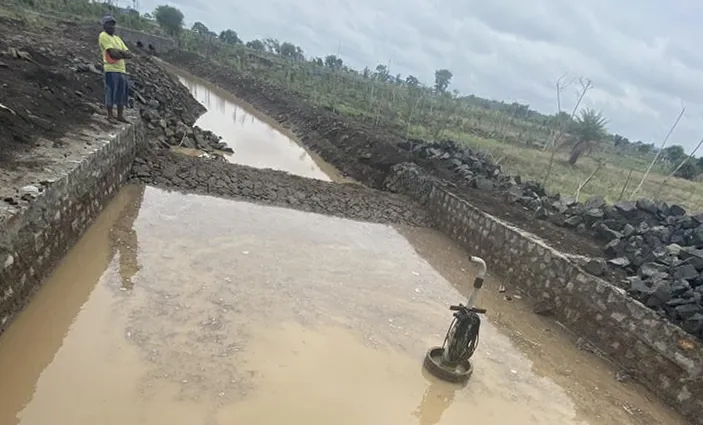 Contact us
Contact usIntent
Community
Studio Organo Concepts
About Us
Subsidaries
Studio Organo
TS RERA No.P02400003403.
TS RERA No.P02400003403.

The interpretation of the term ‘Water Management’ today is not what it used to be 5 or 10 years ago. Population expansion and rapid urban development increased the demand for water supply which in turn depleted our water resources like never before. And water mismanagement is as much a contributor to water scarcity as groundwater table depletion. With this trend going on, our future is not appearing to be water-secure for the coming generations. Sustainable futuristic actions have to be adopted, from individual to the community level, to restore the water resources and mindfully manage our water usage.
With sustainable water management measures in place, Organo Naandi community is water-balanced, i.e., we are putting back as much water into these deep aquifers as we are pulling out through deep aquifer recharge wells.

But these aquifers are not restricted to our site boundary. They are spread across an area spanning hectares under the earth's surface. This means anyone can tap into the water table and consume the water. The benefit of recharging the groundwater table is not being felt by the community.
Considering this, we are adopting slightly different water management strategies for our new venture.
Typical borewells in farmland go to the depth until they strike water. This usually happens, in and around our new project area, at a depth of 800 to 1200 feet. At this depth, water from deep aquifers or confined aquifers is tapped. These "confined" aquifers are confined above and below by rock layers. Depending on the type of soil and rock strata surface water might take years to reach these confined layers. Pulling water out of these layers is therefore not sustainable unless an equivalent amount of water is sent back into the deep aquifer through deep aquifer recharge wells.
There is also an unconfined layer just below the sub-surface that is recharged whenever there is rainfall. As recharge is done easily in these layers, installing borewells that tap this sub-surface water is a more sustainable method.
Borewells:
Based on the studies conducted by the Hydrogeologist B. Narasimha Rao, we are planning to tap water from the unconfined aquifer. This requires a careful study of sub-surface contours and rock formations. At the new project area, the topsoil is black cotton soil followed by a basaltic rock whose thickness varies from a few tens of meters to a few hundreds of meters.
The slope of this basaltic rock was studied throughout our site to detect low lying areas and fractures where subsurface water might travel. A magnetic survey (called Wenner-Schlumberger Array electrical imaging) is conducted to map out these points as shown in the magnetic contour map below. Two points were identified and borewells were drilled to the depth of 250 feet to 300 feet until the water table was reached.

To further improve the water levels in these fractures, the hydrogeologist suggested that we hold rainwater around the borewell and let it naturally percolate into the fractures so that water can make a natural channel through rock fractures.

The work is under progress and we are following his suggestion to wait for the next rains for the water level to improve.

We are also improving the creek that is running through our site by widening it and pitching the stream with stones and building check dams to improve water percolation into the ground.

This way is one of the indirect ways in which dependence on rainfall can happen. The best way is to analyse rainwater runoff directly from hardscape in the project such as roofs, roads, etc. to store for future use. The analysis is currently underway to capture hardscape runoff water. We believe that attempts should be made to arrive at water security rather than just water balance, especially in eco-habitats that Organo develops.
